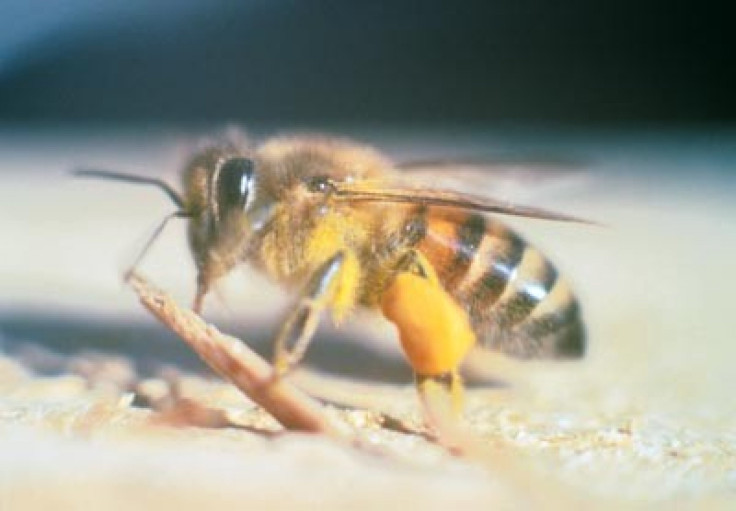Killer Bees, Now in Central California, Probably Trucked-In

They've been the stuff of science fiction films, but now there's been an attack, in reality, in Central California: an attack by African killer bees.
The first recorded attack by Africanized honeybees in Central California occurred earlier this month, and 70-year-old Jack McBride of Modesto, Calif. was the victim. However, bee specialists say the killer bees were probably trucked-in, and it isn't likely that they moved that far north on their own.
McBride was walking his three dogs on July 5, alongside a corn field when he heard bees buzzing in a nearby tree, fox40.com reported. The next thing he knew, he was swarmed and stung more than 50 times. His dogs were stung too.
European honeybees, which are crucial for pollinating many California crops, "just don't overdo it like that," said Eric Mussen, a University of California at Davis apiculturist, or bee expert, modbee.com reported.
Mussen, who published a report on African honeybees in March, said the aggressive species invaded California in 1994, but had never moved north of Tulare County, about 200 north of Los Angeles. Modesto is in Central California, about 160 miles north of Tulare County.
Mussen and Gary Caseri, Stanislaus County's agriculture commissioner, said African bees probably swarmed, or escaped a hive to repopulate elsewhere, after being trucked in to pollinate almonds around Modesto. Central Valley growers pay beekeepers to bring in millions of bees every spring, modbee.com reported. Mussen added that it's unlikely that the African bees could move that far north on their own without reported confrontations.
Unlike their European cousins, African bees are much more defensive of territory, although they are similar to their European cousins in size, venom, and honey production and they deploy more guard/attacker bees, and can chase victim(s) up to a quarter-mile. They also edge-out less-aggressive bee species.
To view a map showing the spread of the killer bees in the U.S., click here.
The killer bees do have a weakness: they can not survive extended periods of forage deprivation, which prevents introduction into areas with harsh winters or extremely dry late summers.
© Copyright IBTimes 2024. All rights reserved.











